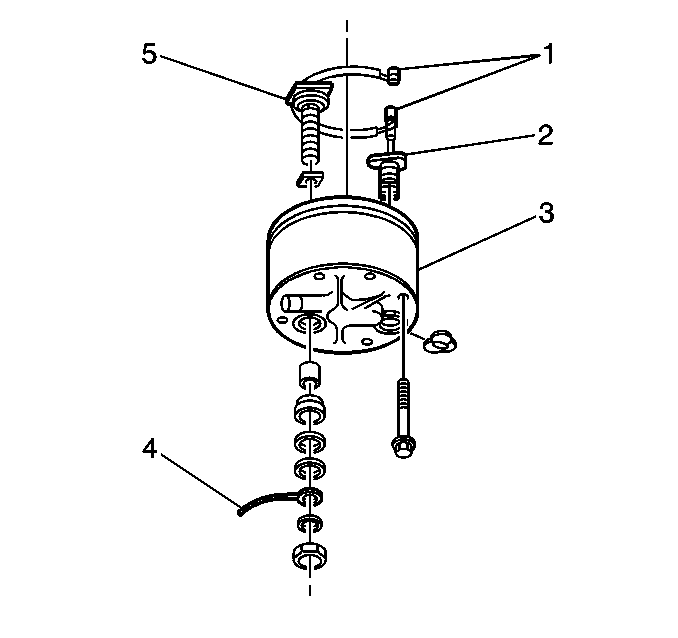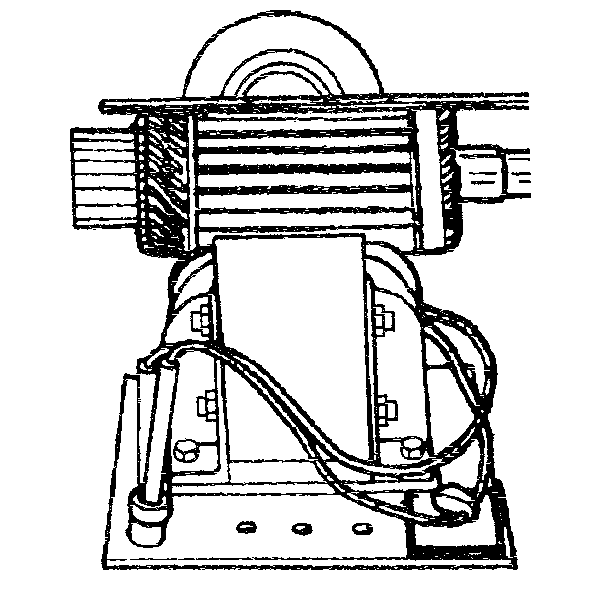
- Wipe all of the components
clean with a dry cloth.
- Do not clean the components in a degreasing tank or with grease
dissolving solvents.
- Inspect the armature bushing fit in the following components:
- Perform the following procedure if the bushings are worn:
If the bushings are not worn proceed to armature shaft inspection.
| 4.1. | Replace the bushings. |
| 4.2. | Puncture a small hole in the oil cup. |
| 4.3. | Pry out the oil cup and remove the old wick. |
| 4.4. | Install a new wick and a new oil cup. |
| 4.5. | Lubricate the new oil wicks and the new bushings before assembling
the starter motor. |
- Inspect the armature shaft for runout or scoring.
Replace the armature assembly if the armature assembly is not in proper
condition.
- Inspect the commutator for runout.
- If the commutator exhibits any of the following conditions, cut
the commutator on a lathe until the commutator is true:
| • | Do not undercut the commutators on these starter motors. |
- Deburr the commutator by lightly sanding the commutator with 400 grit
sandpaper. Never use emery cloth in order to clean the commutator.
- Perform the following procedure in order to inspect the armature
for short circuits:
| 9.1. | Use a steel strip, such as a hacksaw blade, held on the armature
parallel to the shaft in order to rotate the armature in a growler. |
| 9.2. | Inspect steel strip for vibration. |
The steel strip will vibrate on the area of the short circuit.
- Clean the commutator if a short exists between the commutator
bars.
Brush dust or copper dust may cause a short.
- Inspect the armature for loose connections where the conductors
join the commutator bars.
Poor connections cause arcing and burning of the commutator.
- If the bars are not extensively burned, use resin core solder
in order to reattach the leads.
- Remove burned material by turning the commutator down in a lathe.
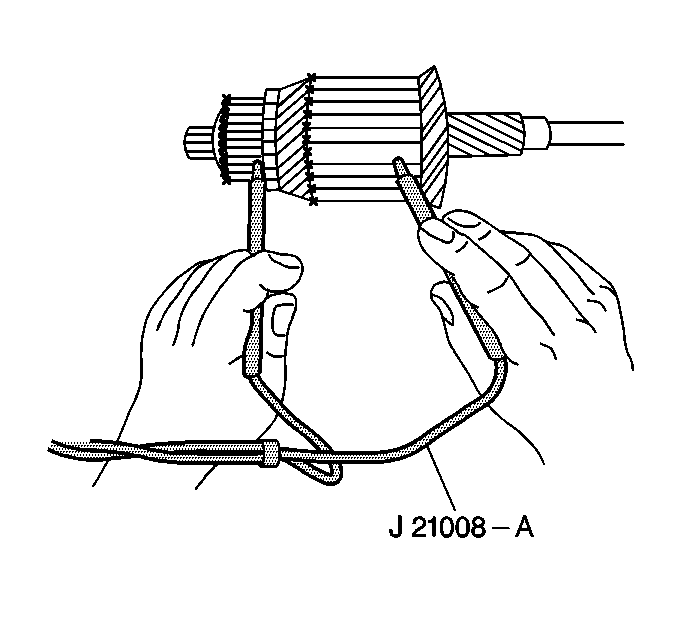
- Use a self-powered test
lamp in order to inspect the armature for grounds.
The armature is grounded if the test lamp lights when one test probe
is placed on the commutator and the other on the armature core or shaft. Brush
dust between the commutator bars and the steel commutator ring may cause
grounding.
- Inspect the motor housing and the solenoid housing for oil and
water.
The presence of oil or water indicates one of the following conditions:
| • | A torn solenoid rubber boot. |
- Replace all seals and gaskets as necessary.
- Inspect the brushes for wear.
New brushes measure about 25 mm (0.9 in) in length.
- Replace the brushes if the brushes are worn to half the size of
a new brush.
- Inspect the brush holders for cleanliness or damage.
Verify that the brushes are not binding the holders.
- Inspect the brush springs for the following conditions:
| • | Replace the brush springs if any of the above conditions exist. |
- Inspect the field coils for the following conditions:
| • | Burned or damaged insulation |
| • | Replace the field coils if any of the above conditions exist. |
- Perform the following procedure in order to inspect the field
frame assembly for grounds:
| 22.1. | Inspect the field coil brush lead connectors. |
Verify that the field coil brush lead connectors are not touching any
ground source.
| 22.2. | Connect a self-powered test lamp between the field frame and the
field connector. |
If the test lamp lights, the field coil is grounded.
| 22.3. | Replace the field coil if the field coil is grounded. |
- Connect a self-powered test lamp from the field connector to each
of the field coil brush leads in order to inspect the field coils for opens
The lamp should light at each lead. If the lamp does not light at each
lead, the field coil is open.
- Inspect the field coils for shorts.
Poor motor performance after all other possibilities have been evaluated
indicates a short.
Important: Tighten the inner nuts (next to the cap) on each of the solenoid terminals
before making any electrical tests. Electrical tests may appear erratic or
give incorrect indications of open circuits if the following conditions
occur:
| • | The inner nuts are loosened as the leads are removed. |
| • | The terminals are loose in the cap. |
- Disconnect all of the leads from the solenoid
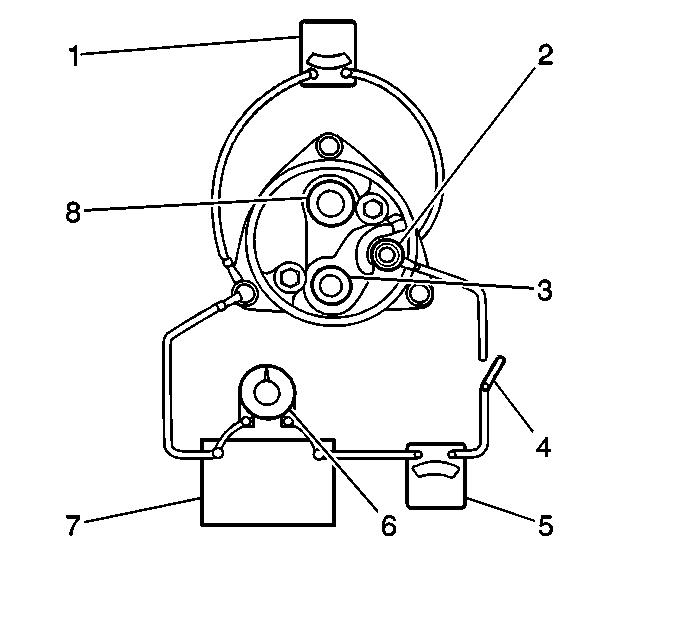
- Make the test connections shown in the above figure in order to test
the solenoid (8) hold-in winding on a type 300 solenoid.
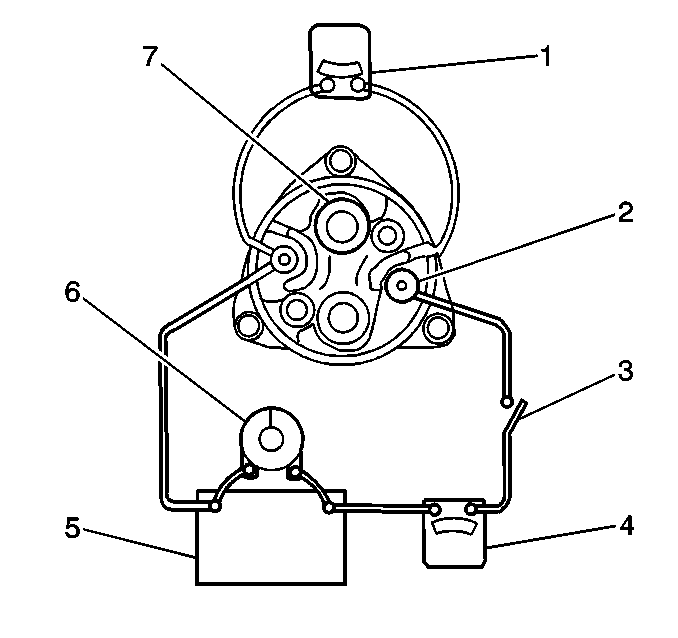
- Make the test connections shown in the above figure in order to test
the solenoid hold-in winding on a type 350 solenoid.
- Turn the solenoid switch to the ON position.
- Adjust the carbon pile in order to lower the battery voltage to
the specified value. Refer to
Starter Motor Usage
.
- Measure the ampere reading. Compare the ampere reading with the
specified hold-in winding value.
A high ampere reading indicates a shorted or grounded winding. A low
ampere reading indicates excessive resistance. Use a digital ohmmeter that
can measure tenths of an ohm in order to measure the winding resistance.
Refer to
Starter Motor Usage
.
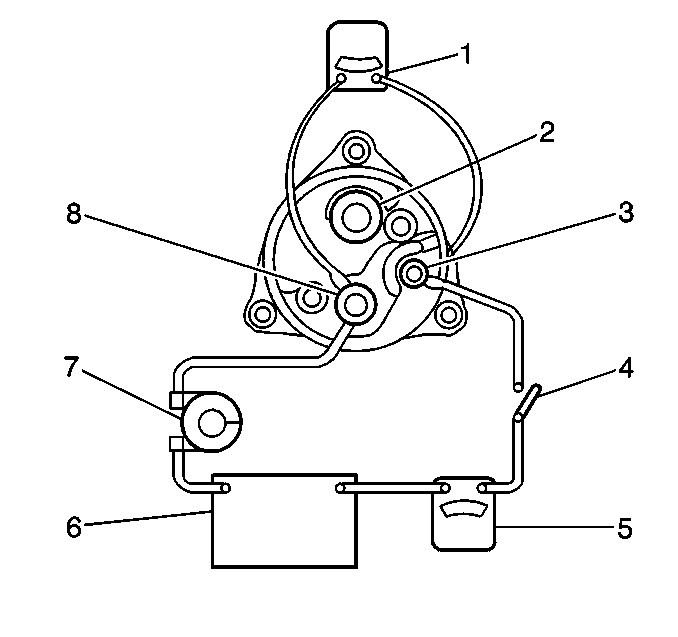
Notice: To prevent overheating of the solenoid pull-in winding, do not leave
the winding energized for more than 15 seconds. The current draw will decrease
as the winding temperature increases.
- Make the test connections shown in the above figure in order to test
the solenoid (2) pull-in winding on type 300 and type 350
solenoids.
- Compare the reading to the specified pull-in winding value. A
high reading indicates a shorted pull-in winding. A low reading indicates
excessive resistance. Refer to
Starter Motor Usage
.
Important: Use this test on four-terminal solenoids only. These solenoids are grounded
through the fourth terminal and the windings are insulated from the case.
The three-terminal solenoid is normally grounded to the case. The three-terminal
solenoid cannot be tested in this manner.
- Disconnect all of the other solenoid leads in order to test the four-terminal
solenoid for grounds.
- Connect a self-powered test lamp between the solenoid S terminal
and a clean metal ground on the solenoid case.
The lamp should not light on a four-terminal solenoid.
- Inspect the drive assembly by turning the drive pinion in the
cranking direction.
Replace the clutch assembly if the drive pinion turns roughly or slips
in the cranking direction.
Periodic lubrication of the 37-MT starter motor is not required.
The supply of oil provided by the tangential oil wicks is sufficient to last
through the engine overhaul interval. The tangential oil wicks are located
in the housings at each of the three armature shaft bushings. Install
new wicks with a fresh oil supply any time one of the following conditions
occurs:
Lubricate new bushings and wicks as described before installing the
bushings and wicks into the starter. Also lubricate the spacer between the
armature and lever housing any time the starter motor is disassembled to
the point of removing the armature.





